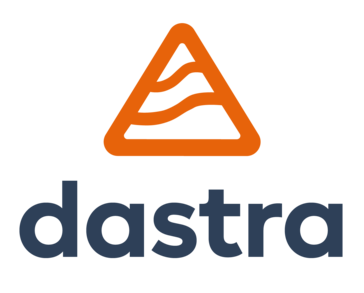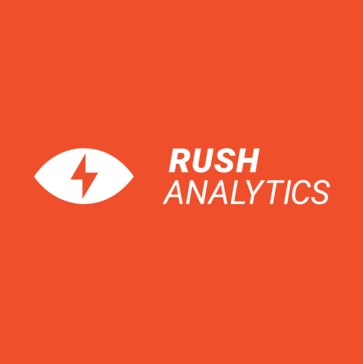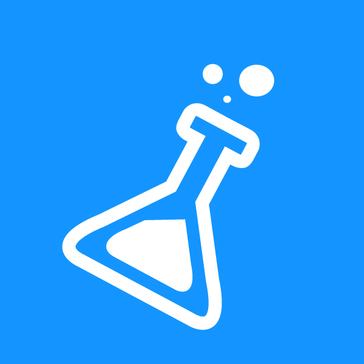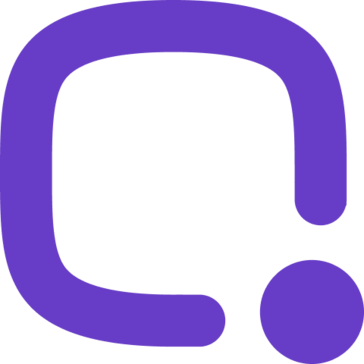3.75
DPOrganizer Review
Discover our in-depth DPOrganizer review. We analyze features, pricing, security, updates, support, and overall value for money. See if it fits your needs!
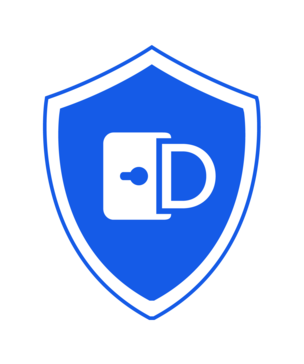
Introduction to DPOrganizer
Welcome to our DPOrganizer review. Understanding DPOrganizer begins with recognizing it as a specialized privacy management software built to assist organizations in managing data protection compliance, particularly regulations like GDPR. It offers a structured platform for mapping data processing activities, handling data subject requests, and assessing risks effectively. Getting acquainted with the DPOrganizer basics reveals a tool focused on centralizing privacy tasks. This overview will touch upon the core functionalities before we dive deeper. Exploring the benefits of DPOrganizer, this review aims to provide insights into its usability and how it streamlines privacy operations. We consider aspects crucial for getting started with DPOrganizer, helping you evaluate if it aligns with your organization's needs for managing data protection obligations efficiently and demonstrating accountability in an increasingly complex regulatory landscape.
Comprehensive overview and target audience
DPOrganizer emerges as a dedicated privacy management software designed specifically to assist organizations navigate the complex landscape of data protection regulations. Its primary function is simplifying compliance: particularly with frameworks like the GDPR and similar global mandates. The platform provides tools aimed at streamlining the documentation and management of personal data processing activities: making a potentially overwhelming task much more manageable.
The intended users for DPOrganizer are typically professionals directly involved in data privacy and compliance. This includes:
- Data Protection Officers DPOs requiring a central system for oversight and record keeping.
- Legal and compliance teams needing to ensure adherence to regulations and manage risks effectively.
- IT and security departments involved in mapping data flows and implementing technical safeguards.
- Medium to large sized enterprises across various sectors that handle significant amounts of personal data and face stringent regulatory requirements.
Essentially: any organization seeking a structured approach to demonstrating accountability and managing data protection obligations will find DPOrganizer relevant.
Key functionalities often include data mapping: records of processing activities RoPA generation: risk assessments: and managing data subject requests. Robust DPOrganizer security features are integral: ensuring the sensitive compliance data managed within the platform remains protected through measures like encryption and access controls. The platform is not static; continuous DPOrganizer updates and new features are rolled out to address evolving legal interpretations and user needs: enhancing its utility over time. Furthermore: comprehensive DPOrganizer support and training resources are available: helping teams get up to speed and maximize their use of the tool. This support structure is crucial for navigating both the software and the intricacies of compliance itself.
When evaluating this solution: potential customers often conduct a DPOrganizer pricing comparison against competitors. While specific costs vary based on organizational size and required modules: the focus should be on the overall DPOrganizer value for money. This value is derived from saved time: reduced compliance risk: enhanced operational efficiency: and the peace of mind that comes with a systematic approach to privacy management. For organizations facing hefty fines for non compliance: the investment can represent significant long term savings and operational stability. It aims to be more than just software; it is positioned as a strategic compliance partner.
User experience and functional capabilities
Delving into the usability of the platform: DPOrganizer user experience insights suggest a focus on structure and comprehensive documentation. The interface is generally perceived as clean and logically organized: designed for professionals who require systematic data handling rather than flashy visuals. Navigation aims to be intuitive for those familiar with compliance workflows: although new users might need some initial familiarization. The platform centralizes numerous privacy tasks: which enhances efficiency once the core concepts are grasped. Overall: the experience is geared towards methodical work processes inherent in privacy management.
Understanding how to use DPOrganizer effectively involves leveraging its core modules. This includes mapping data processing activities by inputting relevant details: generating Records of Processing Activities RoPA automatically based on mapped data: managing Data Subject Requests DSRs through dedicated workflows: and conducting Data Protection Impact Assessments DPIAs or risk assessments using provided templates and methodologies. The software guides users through these processes: aiming to standardize compliance efforts across an organization. Training materials often supplement the initial learning curve.
The setup phase is critical. Following a structured DPOrganizer implementation guide is recommended for a smooth transition. This typically involves configuring organizational settings: defining roles and permissions: and beginning the data mapping process. Initial data population can be time consuming depending on the complexity of existing processes: but the platform’s structure helps manage this. Proper planning during implementation is key to maximizing the tool’s benefits from the outset and ensuring it aligns with specific operational needs.
While generally robust: users should be aware of potential hurdles. Some common problems with DPOrganizer reported by users might include the initial effort required for comprehensive data mapping or adapting internal processes to fit the software’s workflow. The level of detail required for full compliance can feel demanding at first. Ensuring data accuracy and maintaining consistency across different modules requires ongoing diligence from the team. These are often challenges related to the nature of compliance work itself rather than fundamental software flaws.
Integrating DPOrganizer with other tools is an important consideration for seamless operations. While specific capabilities evolve: the potential to connect with existing IT infrastructure: HR systems: or other relevant software via APIs or other mechanisms can significantly enhance efficiency. Organizations should investigate the current integration options to understand how DPOrganizer can fit into their broader technology ecosystem: reducing manual data entry and improving data flow visibility.
The platform is not static; regular DPOrganizer updates and new features are part of its value proposition. These updates often address evolving regulatory interpretations: introduce usability improvements based on user feedback: and expand functional capabilities. Staying informed about these changes ensures organizations can leverage the latest enhancements for better compliance management and user satisfaction. This commitment to development is crucial in the dynamic field of data privacy.
Finally: adopting best practices for using DPOrganizer maximizes its value. This includes establishing clear internal processes for data entry and updates: regular team training sessions: leveraging the risk assessment tools proactively: and utilizing the reporting features to demonstrate accountability. Consistent use and maintaining high data quality within the platform are essential for it to serve effectively as a central compliance hub. Active engagement with DPOrganizer support resources can also help overcome challenges and optimize usage patterns for sustained compliance success.
Who should be using DPOrganizer
DPOrganizer is ideally suited for organizations that view data protection not merely as a legal obligation but as a strategic priority requiring a systematic approach. If your company handles significant volumes of personal data or operates under stringent regulations like the GDPR, CCPA, or similar frameworks, this platform warrants serious consideration. It is particularly beneficial for medium to large sized enterprises across various sectors including finance, healthcare, technology, and retail where data processing activities are complex and regulatory scrutiny is high.
The primary users within these organizations typically include:
- Data Protection Officers DPOs and Privacy Professionals who need a centralized hub to oversee compliance activities, maintain records of processing activities RoPA, and manage data subject requests efficiently.
- Legal and Compliance Teams seeking tools to mitigate risks, conduct data protection impact assessments DPIAs, and demonstrate accountability to regulators and stakeholders.
- IT and Information Security Departments tasked with understanding data flows, mapping systems processing personal data, and implementing appropriate technical safeguards aligned with privacy policies.
A common DPOrganizer use case scenario involves an organization struggling to manually track data processing across numerous systems and departments; DPOrganizer provides the structure to map this accurately and generate necessary compliance documentation like the RoPA. It streamlines previously cumbersome tasks, making compliance management more manageable and less prone to human error.
Ultimately, DPOrganizer delivers the most value to organizations committed to embedding privacy management into their operational fabric. Success with the platform is strongly linked to adopting and adhering to Best practices for DPOrganizer usage, including thorough initial data mapping, consistent process application, regular training, and proactive risk assessment. Companies looking for a quick fix without dedicating resources to proper implementation and maintenance might not realize its full potential. It is designed for those ready to invest in robust, long term privacy governance.
Unique Features offered by DPOrganizer
DPOrganizer offers several customization options and unique features designed to adapt to specific organizational needs and enhance compliance efficiency. While primarily known for its structured approach, the platform provides flexibility that allows companies to tailor its use. This adaptability is key when considering Customizing DPOrganizer for business growth; as organizations evolve, their privacy management requirements change, and the software aims to accommodate this through configurable settings and workflows.
Key unique features often revolve around its dedicated focus on privacy management principles, particularly those mandated by GDPR. The platform excels in detailed mapping of data processing activities and the automated generation of Records of Processing Activities RoPA. Its structured methodologies for conducting Data Protection Impact Assessments DPIAs and risk assessments provide a consistent framework crucial for demonstrating accountability. Users can often customize templates and assessment criteria to better reflect their specific industry risks and operational context.
Further customization extends to user roles and permissions, ensuring that access to sensitive compliance data is appropriately controlled within the organization. This granular control helps align the tool with internal governance structures. While DPOrganizer is primarily geared towards medium to large enterprises with complex compliance needs, the question of DPOrganizer for small businesses sometimes arises. Smaller organizations might find value in its systematic approach, although the comprehensive nature might be more extensive than required for very simple operations. Potential suitability depends heavily on the specific regulatory pressures and data processing complexity faced by the small business.
A critical aspect of its adaptability lies in Integrating DPOrganizer with other tools. The ability to connect with existing IT systems, HR platforms, or other business software via APIs or similar mechanisms is vital for streamlining data management, reducing manual entry, and ensuring consistency across the tech ecosystem. This integration capability significantly boosts operational efficiency and provides a more holistic view of data protection across the organization, turning DPOrganizer into a more deeply embedded component of the company’s compliance infrastructure.
Pain points that DPOrganizer will help you solve
Navigating the intricate world of data privacy compliance presents numerous challenges for organizations. Many businesses struggle with fragmented processes, overwhelming documentation requirements, and the constant pressure of regulatory scrutiny. DPOrganizer is designed specifically to address these common frustrations, providing a structured platform to regain control and confidence in your privacy management efforts.
Here are some key pain points DPOrganizer directly tackles:
- Overcoming Compliance Complexity: Feeling lost in the dense requirements of regulations like GDPR. DPOrganizer provides guided workflows and templates to simplify adherence.
- Lack of Centralized Overview: Struggling to get a clear picture of data processing activities scattered across departments and systems. The platform offers a central repository for mapping data flows and maintaining accurate Records of Processing Activities RoPA.
- Inefficient Data Subject Request Handling: Wasting time and resources manually tracking and responding to DSRs. DPOrganizer streamlines this process, helping you meet deadlines consistently.
- Difficult Risk Management: Finding Data Protection Impact Assessments DPIAs and ongoing risk assessments burdensome. The software offers structured methodologies and tools to conduct and document these crucial assessments effectively.
- Demonstrating Accountability: Worrying about proving compliance to regulators or stakeholders. DPOrganizer generates necessary documentation and reports, making it easier to showcase your privacy posture.
- Manual Process Overload: Spending too much time on manual documentation, updates, and reporting instead of strategic privacy initiatives. DPOrganizer automates many of these tasks, freeing up valuable resources.
- Integrating Privacy into Operations: Facing difficulties connecting privacy management with existing workflows and systems. “Integrating DPOrganizer with other tools” is a key capability, enabling smoother data flow and reducing redundant data entry across your technology stack.
- Scaling Privacy Efforts: Concerns that current privacy processes will not support company expansion. “Customizing DPOrganizer for business growth” ensures the platform can adapt to evolving needs, making it a sustainable solution. This adaptability makes DPOrganizer relevant across various scenarios, highlighting the value of “DPOrganizer for different businesses sizes” facing significant compliance obligations.
By addressing these pain points, DPOrganizer helps transform privacy compliance from a source of stress into a manageable, integrated part of your business operations, fostering trust and reducing risk.
Scalability for business growth
As your business expands, so does the volume and complexity of personal data you process. This growth inevitably increases your compliance burden and the potential risks associated with data protection regulations. DPOrganizer is designed with this trajectory in mind, offering inherent scalability to support your company’s development. It provides a robust foundation that can adapt as your operational footprint, customer base, and regulatory obligations evolve, ensuring privacy management practices do not hinder progress but rather grow alongside it.
The platform’s architecture anticipates increasing demands. Whether you are entering new markets subject to different regulations, launching new products involving novel data processing activities, or simply handling a larger volume of data subject requests, DPOrganizer’s structured approach maintains order. Its centralized system prevents the fragmentation that often occurs when privacy processes are managed manually or with less specialized tools. This structured environment is crucial for maintaining control and demonstrating accountability, even amidst rapid expansion. The ability to manage multiple entities or departments within a single interface further supports scalability for complex organizational structures.
Effective “Customizing DPOrganizer for business growth” means leveraging its adaptable features. You can configure workflows, user roles, and assessment templates to match your evolving internal processes and risk landscape. This flexibility ensures the platform remains relevant and efficient as your needs change. Furthermore, the potential for “Integrating DPOrganizer with other tools” enhances its scalability by connecting it seamlessly into your wider technology ecosystem, allowing for smoother data flows and reduced manual overhead as operations scale. This focus on “Customizing DPOrganizer for business scalability” makes it a strategic asset, not just a compliance tool. It allows privacy management to scale efficiently, supporting sustainable growth without compromising on data protection standards.
Final Verdict about DPOrganizer
DPOrganizer presents itself as a focused and structured solution for tackling the complexities of modern data privacy regulations. Its core strength lies in providing a centralized platform specifically designed for tasks crucial to compliance: such as detailed mapping of data processing activities, automated generation of Records of Processing Activities, efficient management of data subject requests, and methodical execution of risk assessments. For organizations currently overwhelmed by spreadsheets or struggling with fragmented compliance efforts, DPOrganizer offers a clear pathway towards systematic and demonstrable privacy management, effectively addressing significant operational pain points.
The platform is clearly tailored for medium to large enterprises, particularly those operating under stringent frameworks like GDPR. Its primary users; Data Protection Officers, legal and compliance teams, and relevant IT departments; will find its features directly aligned with their demanding responsibilities. It excels at reducing compliance complexity, providing essential oversight, streamlining previously cumbersome DSR handling, and simplifying the critical process of proving accountability to regulators and stakeholders. The user experience is geared towards professionals needing structure, though initial familiarization and setup require dedicated effort.
Potential adopters must understand that DPOrganizer’s full value is unlocked through commitment. Comprehensive initial data mapping is resource intensive, and maintaining data accuracy demands ongoing diligence. It is not a passive tool but an active management system that requires integration into established internal workflows and best practices. Its notable strengths in scalability and customization, however, ensure it can adapt to evolving business needs and increasing regulatory demands, making it a sustainable solution for growing organizations committed to long term compliance. Integration capabilities further enhance its adaptability within a broader tech stack.
So, what is the Final verdict on DPOrganizer? It stands out as a robust, specialized, and highly capable privacy management software for organizations genuinely serious about embedding data protection into their operational fabric. If your company requires a structured, comprehensive system to manage compliance obligations effectively, mitigate associated risks consistently, and demonstrate accountability with confidence, DPOrganizer represents a strong contender. Its true value lies in bringing methodical order to regulatory complexity and providing the necessary framework for sustainable privacy governance, justifying the investment for businesses prioritizing robust compliance and operational stability.
Advantage
Disadvantage
Centralizes all your privacy compliance activities
Automates data mapping and Record of Processing Activities
Simplifies efficient Data Subject Request management
Ready-to-use templates speed up compliance tasks
Improves visibility and collaboration for privacy teams
Disadvantage
Can be expensive for smaller organizations
Initial setup might feel complex
Limited integrations with niche software
Feature set could be overwhelming for simple needs
Customization options may not suit all workflows
Rating
Professional
€6500 per Year
- Data Mapping
- Gap Identification
- Tasks
- Assessments Light
- E-learning Light
- Integrations
- More add-ons available
- Professional Services available
Professional
€6500 per Year
Web Based
Windows
Mac OS
Linux
Android
iOS
Phone Support
Email/Help Desk
AI Chat Bot
Live Support
24/7 Support
Forum & Community
Knowledge Base
Live Online
Documentation
Videos
In Person
Webinars
Company: DPOrganizer ABDPOrganizer AB
Email: hello@dporganizer.comhello@dporganizer.com
Address:
Mäster Samuelsgatan 42, 111 57 Stockholm, SwedenMäster Samuelsgatan 42, 111 57 Stockholm, SwedenPhone: +46 (0) 8 121 595 95+46 (0) 8 121 595 95
Implementation
Web Based
Windows
Mac OS
Linux
Android
iOS
Support
Phone Support
Email/Help Desk
AI Chat Bot
Live Support
24/7 Support
Forum & Community
Knowledge Base
Training
Live Online
Documentation
Videos
In Person
Webinars
Group text
Company: DPOrganizer ABDPOrganizer AB
Email: hello@dporganizer.comhello@dporganizer.com
Address:
Mäster Samuelsgatan 42, 111 57 Stockholm, SwedenMäster Samuelsgatan 42, 111 57 Stockholm, Sweden
Phone: +46 (0) 8 121 595 95+46 (0) 8 121 595 95
Alternative Products
Web Based
Documentation, Webinars, Videos, Live Online
Email/Help Desk, Live Support, Knowledge Base
Frequently Asked Questions
What is DPOrganizer?
DPOrganizer is a dedicated Software-as-a-Service (SaaS) platform designed specifically to help organizations manage and document their data privacy compliance efforts, particularly concerning regulations like GDPR and CCPA.
Who is DPOrganizer best suited for?
It’s best suited for Data Protection Officers (DPOs), legal teams, compliance professionals, and IT security managers within organizations of varying sizes (often mid-market to enterprise, but potentially valuable for smaller businesses with complex data processing) that handle significant amounts of personal data and need a structured way to meet regulatory requirements.
How can DPOrganizer help me manage data privacy compliance?
DPOrganizer helps by centralizing your privacy program management; it enables you to map data flows, maintain Records of Processing Activities (RoPA), conduct Data Protection Impact Assessments (DPIAs), manage Data Subject Access Requests (DSARs) efficiently, track third-party vendor compliance, and generate necessary reports, ultimately reducing manual effort and minimizing compliance risks.
What are the key features of DPOrganizer?
Key features typically include visual data mapping, automated RoPA generation, DSAR workflow management, risk assessment modules (including DPIAs/TIAs), third-party vendor risk management, consent management tracking capabilities, audit trails, and comprehensive reporting functions.
How easy is DPOrganizer to implement and use?
While designed with user-friendliness in mind, featuring intuitive interfaces and dashboards, the ease of implementation and use can depend on your organization’s complexity and the team’s familiarity with privacy concepts; initial setup requires data input and configuration, but ongoing use is generally streamlined compared to manual methods, often supported by vendor assistance.
What does DPOrganizer cost?
DPOrganizer generally operates on a subscription model, with pricing often tailored to factors like company size, the number of users, required modules, and the volume of data processing activities; specific pricing isn’t typically listed publicly, requiring direct contact with their sales team for a custom quote.
What are the main pros and cons of DPOrganizer?
Pros: Centralized platform for all privacy tasks, automation of repetitive processes (like RoPA updates), improved collaboration, enhanced visibility into data processing, structured approach to compliance, reduced risk of fines, dedicated privacy focus. Cons: Can be a significant cost investment, may have a learning curve initially, potential need for integration with other systems, might be overly complex for very small businesses with minimal data processing.
Is DPOrganizer worth the investment?
Whether DPOrganizer is worth the investment depends heavily on your organization’s specific circumstances; if you face complex data privacy obligations under regulations like GDPR, handle large volumes of sensitive data, and need to demonstrate robust compliance efficiently, the structure, automation, and risk reduction it offers can provide significant value and a strong ROI, likely outweighing the cost compared to potential fines or manual effort.


